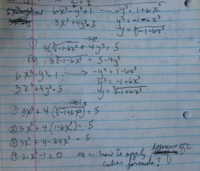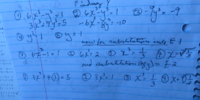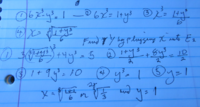allegansveritatem
Full Member
- Joined
- Jan 10, 2018
- Messages
- 962
Here is a system of equations that is to be solved using substitution:

Here is what I tried to do with it:

Somehow the fact that there is a cooeficient that is not a cube makes me hesitate to try anything with the difference of two cubes formula. Is said formula even applicable here. If so how, if not, what would be the way forward. Seems to me I am missing the primrose path here and have wandered into the bramble patch.

Here is what I tried to do with it:

Somehow the fact that there is a cooeficient that is not a cube makes me hesitate to try anything with the difference of two cubes formula. Is said formula even applicable here. If so how, if not, what would be the way forward. Seems to me I am missing the primrose path here and have wandered into the bramble patch.


